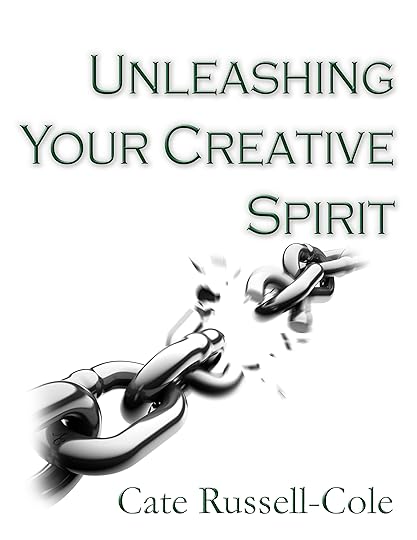Cate Russell-Cole's Blog, page 10
June 17, 2014
Quick-Read Character and Plot Handbooks Conflict #Competition
 Who says that getting older is a bad thing? It was four years ago on… let me peer at the calendar with my ageing eyesight… Saturday… that I left the traumatic world of social work to become a full time author. I’ve never looked back. To share the heady joy of freedom (oh believe me, I do not miss where I came from…) I am having a competition.
Who says that getting older is a bad thing? It was four years ago on… let me peer at the calendar with my ageing eyesight… Saturday… that I left the traumatic world of social work to become a full time author. I’ve never looked back. To share the heady joy of freedom (oh believe me, I do not miss where I came from…) I am having a competition.
Below are the ebooks you can win, which come in pdf, mobi (Kindle), or epub (iBooks) format. Answer in the comments and also tell me which format you’d prefer to receive your book in. Next week I’ll send both books to the winners. Ensure you give the WordPress comment form a valid email address. (I won’t misuse it, collect it, sell it etc.)
Here is what you have to do. Tell me the topic of the stupidest fight you have ever had. The two that make me laugh the most or totally bamboozle me, win. I don’t want all the details, just the topic in one sentence. The best fight starter I have ever heard of was a paperclip. That one won the bamboozle section. Humans are curious creatures, aren’t they?
Good luck… and don’t forget to look back and laugh. Life really is crazy.
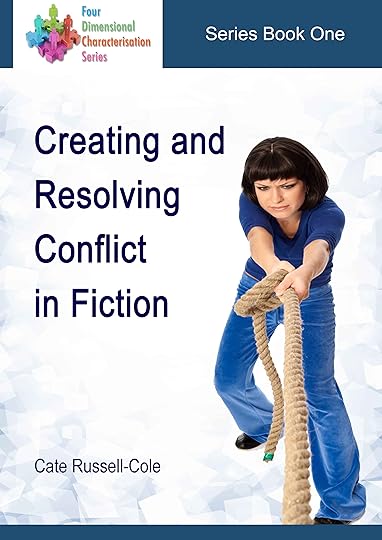 Creating and Resolving Conflict in Fiction
Creating and Resolving Conflict in FictionThis book dissects conflict into its component parts; looks at how it works and helps you generate conflict plot-lines and themes which will add richness and realism to your work. The principles apply to any kind of fiction, regardless of the length, characters or genre. It is written by a writing teacher who also has a background in counselling.
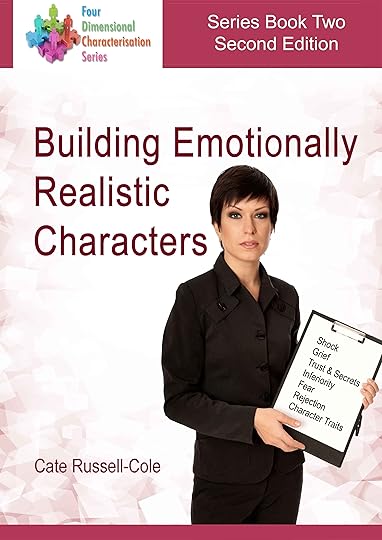 Building Emotionally Realistic Characters
Building Emotionally Realistic CharactersReview from Valerie Caraotta: “This resource is very good for writers because if the attempt is to build characters around certain emotional states it becomes imperative to accurately write a work of fiction that is realistic. Author Cate Russell-Cole shares the reality that what others see and hear must be something they have encountered and can relate to easily. Because it is critical to bring characters to life in a convincing way she provides the psychology behind various mental states including depression, grief, psychological shock, fear, shame, and also the severity of schizophrenia and multiple personality disorder.
I greatly tuned my ears into all she offered when providing the characteristics of each state because she came from a counseling background. Knowing the duration of grief stages will help you create appropriate time frames built into novels. The reader will become much more engaged in your work and you will gain greater credibility.
This is a book that could revolutionize your writing and bring it to another level. There are other books in this series also worth considering. It is set at a bargain price for the information that will be presented.”
Whether you are writing fiction, memoir, poetry, short stories, plays, screenplays or music, the ability of your work to touch others depends on how they relate to the emotional messages you are conveying. What they see and hear must be something they have encountered and can relate to easily; or it must be shared in another way they can grasp. This e-book is a full of the incantations you need to bring your characters to life in a way that is emotionally realistic. There are no short cuts to “happily ever after” endings, which leave your plot line hollow and sounding fake. The book contains introductory level psychology which will give you an insight into how emotions and events weave us together into a whole or hurting person.
This is the second book in the Four Dimensional Characterisation Series.
Filed under: What's On







June 15, 2014
Alternative Words to Said and Physical Characteristic Descriptions ~ Resource List
Finding alternatives to words like said, replied, answered and all the usual cliches has become my current life’s work… as has writing effective place and character descriptions. I have trolled the Internet for inspiration and while these goodies are in my head, I will share them with you.
Alternatives to said:
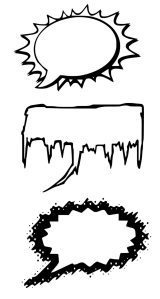 SPW books has a great list in a table form and also
SPW books has a great list in a table form and alsolinks to other useful materials in the side navigation bar.
Raid the list at: http://www.spwickstrom.com/said/
If you want to go big, or go home, here are 550
more alternatives from A.J. Barnett:
http://ajbarnett.hubpages.com/hub/400-Alternative-words-for-said
I seem to be writing in waves, adding in layers over the plot and characterisation. Right now I am into description, including body language. Some of the most helpful resources found are listed below. There are also dozens on my Pinterest board for all genres of writers, so I’ll place that link here as well.
Physical characteristic descriptions:
Obsidian Bookshelf has many pages which list eye colours, body types, hair colours, character names, cliches to avoid and much more. I’ll include full link addresses in case you wish to print this page. http://www.obsidianbookshelf.com/html/articles_and_writing_how-tos.html
Writers in the Storm : http://writersinthestorm.wordpress.com/2011/12/02/body-language-an-artistic-writing-tool/ and Character Eye Descriptions, A Window to the Soul http://writersinthestorm.wordpress.com/2014/05/19/eyes-windows-into-a-characters-soul/
 My Pinterest board with a mammoth load of useful links: http://www.pinterest.com/cateartios/inspiration-for-all-writers/
My Pinterest board with a mammoth load of useful links: http://www.pinterest.com/cateartios/inspiration-for-all-writers/Angela Ackerman’s blog also has brilliant information on skills and talents and why your character needs them. http://writershelpingwriters.net/author/angela/ Her books, The Emotional Thesaurus, The Positive Traits Thesaurus and the Negative Traits Thesaurus are a goldmine for authors. I have never heard a negative word about them. Angela’s work is well written and researched. (No, she hasn’t asked me to say a word, I’m just a fan.)
Please add your suggestions in the comments. I highly recommend chasing resources like this down, they have blossomed out my word count! After too many years writing non-fiction, I have learnt to write too tight. This new venture is doing me good.
Happy hunting!
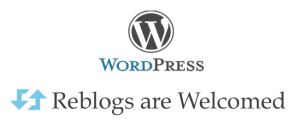
This blog post by Cate Russell-Cole is licensed under a Creative Commons Attribution-NonCommercial-ShareAlike 3.0 Unported License. You are free to share and adapt it.
All clipart used here is from Openclipart.com
Filed under: Writing Resources Tagged: Alternatives to said, author, challenge, characterisation, cliches, dialogue, editing, emotions, eyes, fiction, hair, inspiration, Physical characteristic descriptions, Pinterest, resource, writer, writing







June 13, 2014
One-Track Writing Minds and Umbilical Buddies ~ #amblogging
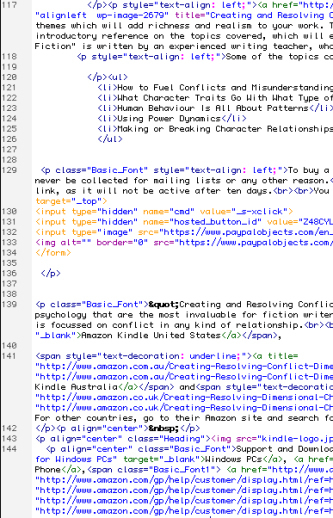
How I Dream ~ Scary, huh!
Early in May, I wrote a post on being bored with my blog and I dropped posting to a bare minimum. I was my own rat-in-the-maze experiment: how long could I go, before I jumped the dividing walls to raid the cheese? The answer was, not very long. Oh, camembert! I missed my blog. I seem to be joined to WordPress by a binary umbilical cord build.
The time away was the best thing I could have done for my novel, but I did miss the routine of blogging and the interaction it gives me with you. Yes, you, thanks for sticking with me, I genuinely appreciate that.
It’s been more than an ‘if you love it, walk away and if it comes back, it’s yours… if it doesn’t, it never was,’ kind of experiment. I discovered that a lot of the need to pull back from blogging, came from how my brain functions.
I know that when I am building a web site, I dream in xhtml and javascript. No seriously, this image really is exactly how I dream, when knee deep in my web site. I took the screenshot from the program I use. It’s exactly what I see: endless pages of scrolling code.
In the time spent purely on The Dragon Tree, I started to dream in dialogue tags. I’m serious, anyone I dreamt of came accompanied by tags. It may be time for another MRI of the old noggin, but “whatever was being said when I dreamed,” Cate typed, missing hitting the correct letters on her iPad yet again, “really was coming out this way.” At least she always found the full stop. She decided to start a new paragraph.
Is that crazy or what?
I seem to have this need to write one genre at a time when working. The blog is non-fiction, the book is fiction. At the moment, the book is in editing mode so I have free mental space to come back to the blog. I’m yet to master transitioning. Does anyone else experience that? If you do, I’d love input on handling it better.
I believe the bottom line on blogging is that I need to diversify topics, give myself more down-time and “it may assist, if I hook up the bluetooth keyboard again,” she remarked wryly, then realised, that she’d just typed an over-used adverb. *face palm*
Delete key, stat!
So there will be small changes here and there, such as the blog title change, as I find a new direction that suits me, but other than that, it’s back to business.
Feedback on what you do and don’t like about the blog and what you’d like to read, is most welcome. Comment away!

This article / blog post is Copyright Cate Russell-Cole 2014. All rights are reserved Internationally. You may not reproduce it in any form, in part of whole, without Cate’s prior written permission. That includes usage in forms such as print, audio and digital imaging including pdf, jpg, png etc. A fee may be requested for re-using her work if it is for a commercial venture.
Link sharing and Pinterest pins are most welcome as long as Cate is the attributed Author.
Filed under: What's On Tagged: author, blogging, creativity, dreaming, editing, goals, mental processes, multi-tasking, novel, problem solving, writer, writing







June 10, 2014
Writer Beware

http://www.accrispin.blogspot.com.au
“Writer Beware® is the public face of the Science Fiction and Fantasy Writers of America’s Committee on Writing Scams. We also receive sponsorship from the Mystery Writers of America. Like many genre-focused writers’ groups, SFWA and MWA are concerned not just with issues that affect professional authors, but with the problems and pitfalls that face aspiring writers. Writer Beware, founded in 1998, reflects that concern.
Although SFWA and MWA are US-based organizations of professional fiction authors, Writer Beware’s efforts aren’t limited by country, genre, or publication history. The Writer Beware website and blog can be used by any writer, new or established, regardless of subject, style, genre, or nationality.”

This blog post by Cate Russell-Cole is licensed under a Creative Commons Attribution-NonCommercial-ShareAlike 3.0 Unported License. You are free to share and adapt it.
Filed under: Writing Resources Tagged: blog, characterisation, encouragement, goals, ideas, Indie Author, Indie publishing, inspiration, marketing, novel, plot, problem solving, resource, success, support, writer, Writer Beware, writing







June 8, 2014
Eye Strain Reducing Editing for Writers – #amediting #amwriting

The amount of time we spend hunched over computers, tablet devices and ebook readers isn’t good for our eyes, necks, shoulders or wrists, but it’s essential. I have noticed a steady increase in the number of migraine sufferers I have met, who are writers. I am wondering if this is an occupational hazard, rather than an accident.
In writing and editing the first drafts of The Dragon Tree, while trying to cope with my frequent migraines, I stumbled across a few tips which may also help you, whether electronic screens give you headaches or not. These methods have given me much more writing time.
The biggest problem is the harsh contrast between black text and a white page. Of course, turning down screen brightness helps, but that is not enough. I found that a soft green or a blue text colour, was much easier on my vision. Also, changing colours between drafts gave my brain a shock. I was able to pick up many hidden errors, such as ‘or’ not ‘of’, ‘become’ not ‘became’… all those things that the spell checker misses. For more information on tricking your brain into helping you edit efficiently, see this post: The Best Kept Editing Secret.
The examples shown here are deliberately fuzzy as this is my WIP, but you can see how the colours affect your own eyes. When you are staring at text for hours, a simple select all and font colour change can help you enormously.
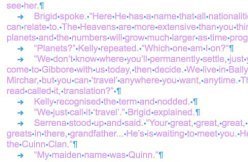 I got to a point where I had messed up my formatting with so many edits, that I needed to turn on the dreaded show all characters. I have always found this savage on my sight. I needed just the markers, not text and on experimenting, found that changing the text colour so the contrast was high, made the character marks pop out. One less headache… yes!
I got to a point where I had messed up my formatting with so many edits, that I needed to turn on the dreaded show all characters. I have always found this savage on my sight. I needed just the markers, not text and on experimenting, found that changing the text colour so the contrast was high, made the character marks pop out. One less headache… yes!
Another hint I picked up from a web site was to never edit with justified text. The extra spaces between the words make proof reading impossibly hard. Double spacing is critical for proof reading, or you wind up reading one sentence on top of the other! For a great post on the difference between proofreading and editing, please visit the Writers in the Storm blog.
For ease, I began writing on my iPad, as I was able to get hold of a word processor app with a darker background. It helped, but the sheer number of spelling mistakes generated lost me masses of time in needless correction. This is all the space I had to work with and it drove me crazy. Most tablet word processors are similar, so in the end, I abandoned their use, except on the worst days.
Update: thanks to Patricia de Hemricourt ( @epublishabook) for sending me to this post on Computer Vision Syndrome. It’s exceptionally helpful.

Textkraft EN is available through iTunes.
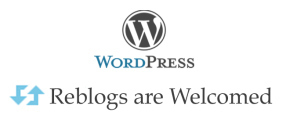

This work, created and Copyright Cate Russell-Cole 2014 is licensed under a Creative Commons Attribution-NonCommercial-NoDerivatives 4.0 International License.
Filed under: Editing Tagged: author, books, challenge, discovery, editing, eye strain, fiction, Indie publishing, migraine, novel, problem solving, stress management, writer, writing







June 5, 2014
Word Count Meters and Tight Writing Resources
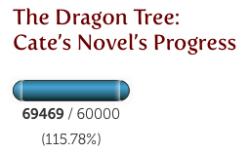 A few people have been asking me where I source my pretty word count meter from. They are available in multiple colours and come from this blog: http://svenjaliv.com/resources/wordmeter/ Svenja also has themed, word count spreadsheets you can download, which cover all of 2014. She’s a talented lady! Each year, she updates her spreadsheets, so her site is always bookmarked.
A few people have been asking me where I source my pretty word count meter from. They are available in multiple colours and come from this blog: http://svenjaliv.com/resources/wordmeter/ Svenja also has themed, word count spreadsheets you can download, which cover all of 2014. She’s a talented lady! Each year, she updates her spreadsheets, so her site is always bookmarked.
Thank you to everyone who weighed in on the word count debate. It’s been interesting to see that nearly everyone said, “do it your way,” or “when it’s finished, it’s finished.” I have nearly hit the 71,000 word mark, which was quite unexpected. On rewriting, I had one of those moments that is more a flash of lightning hitting me, than a lightbulb moment.
Over the years I have worked as a freelance feature writer, course writer and editor. It was drummed into me with each one: write tight. Do not waffle, remove absolutely every extraneous word or sentence and cut everything back to the bone; to the marrow if you can. I can cut and slash pieces written, to get them down to a word limit with cold, hard malice. (Resources on how to do that are below.) The ebooks which I currently sell are very brief. They get straight to the point, because that is how I have been told to write. My blog posts come in under the recommended work limit. Essentially, I have boxed myself in out of habit and I am now learning to be free.
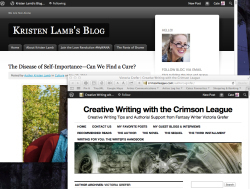 Over the last week I have been reading Victoria Grefer’s book, Writing for You. I have followed Victoria’s blog for a long time and have been enjoying the relaxed, conversational style of her book. It is nothing like mine. All my writing ebooks are quick-read, start from any chapter, writer’s companions. Standing next to other books in their category, they may look anorexic, but they are designed to save the reader time. You can put your finger on the topic: task accomplished! That is beneficial for some, but it is not the best way to write a novel. While we need to write with excellence, dot point detail novels are not good reads.
Over the last week I have been reading Victoria Grefer’s book, Writing for You. I have followed Victoria’s blog for a long time and have been enjoying the relaxed, conversational style of her book. It is nothing like mine. All my writing ebooks are quick-read, start from any chapter, writer’s companions. Standing next to other books in their category, they may look anorexic, but they are designed to save the reader time. You can put your finger on the topic: task accomplished! That is beneficial for some, but it is not the best way to write a novel. While we need to write with excellence, dot point detail novels are not good reads.
There is definitely a place for writing tight, by this I mean corset strength tight, not just writing well. To be able to edit your work down to the wire and say what needs saying in a succinct, precise form is a valuable skill, however, don’t let it limit you as I did. I love Kristen Lamb’s Warrior Writers blog posts, they break every blog rule on length, but I don’t care how long they are. They make me feel good and strengthen my craft. If something is worth reading, regardless of how long or short it is, it will be read and appreciated.
This has been a great lesson in breaking free of my self-imposed boxes. I didn’t even know I was in them. I’m enthusiastic about seeing what old habits I can break out of next.
 Resources on how to write tight and cut out word, or phrase, redundancies:
Resources on how to write tight and cut out word, or phrase, redundancies:http://grammar.about.com/od/words/tp/clutter_tips.htm
http://writingcenter.unc.edu/handouts/writing-concisely/
http://www.4syllables.com.au/resources/web-writing-exercises/cut-unnecessary-words/
Quick-read, writer’s companions.
These ebooks are available at the lowest prices I was able to set. You can purchase them through my web site as a .pdf or through Amazon Kindle. Please click on the cover for contents and ordering information.
You don’t have to own a Kindle device to enjoy Amazon’s Kindle e-books. Here are the Support and Download links for the free Kindle Readers for a range of devices: Windows PCs, Windows Phone, Mac, iPad, iPhone, iPod Touch, Andoid Tablet, Android Phone, and Blackberry.
Full-length course titles.

This article / blog post is Copyright Cate Russell-Cole 2014. All rights are reserved Internationally. You may not reproduce it in any form, in part of whole, without Cate’s prior written permission. That includes usage in forms such as print, audio and digital imaging including pdf, jpg, png etc. A fee may be requested for re-using her work if it is for a commercial venture.
Link sharing and Pinterest pins are most welcome as long as Cate is the attributed Author.
Filed under: "Writing Lessons from the Writing Life" Tagged: author, blog, blogging, discovery, fiction, Indie publishing, inspiration, Kindle, Kristen Lamb's Warrior Writers, length, novel, problem solving, Victoria Grefer, word count, word count meter, writer, writing, writing tight







June 4, 2014
When book sales are slow… how to keep motivated
This is an encouraging post, that most of us need at the moment.
 Originally posted on Nail Your Novel:
Originally posted on Nail Your Novel:
 This morning I was scratching my head for a post to write, so I asked on Facebook for ideas. Immediately, Vivienne Tuffnell volunteered this great question: ‘How do you keep motivated when your books aren’t flying off the shelves?’
This morning I was scratching my head for a post to write, so I asked on Facebook for ideas. Immediately, Vivienne Tuffnell volunteered this great question: ‘How do you keep motivated when your books aren’t flying off the shelves?’
Before I could even type a reply, Zelah Meyer had countered with: ‘delusional optimism and a long-term view’!
Which is about what I would say (at least, the second bit).
We’ll assume for the moment that you’ve done everything possible to ensure your books are up to scratch, with appropriate covers, well-honed descriptions and sharp metadata. You know the book’s good. You’re doing all you can, as your promotion budgets and tastes allow. But those sales aren’t stacking up.
How do you take courage?
Build volume
Keep calm and build a body of work. Actually, I see this as the only possible plan. Writing is a lifelong thing anyway. If you’ve…
View original 929 more words
Filed under: Writing Resources







June 3, 2014
A Quick World Building Tip: Map Building in #Fantasy / #SciFi
When I have a story idea that I need to churn over in my head, I will often use a prompt image as a desktop and/or iPad wallpaper. The images engage my subconscious mind. It works well for character costume creation, scene settings and this map of Asgard produced a valuable aha!

Source unknown.
It isn’t as clear here, but on my iMac screen, this image shows very clearly where parts of the image (water mainly) have been painted, how the streets were drawn in to form a triquetra… and the coastline looked oddly familiar. Google maps anyone? It has to be a composite of existing land images.
I have been buying graph pads and putting off drawing in coastlines and the more tedious geographical features, but using fragments of Google maps gives me a helping hand and keeps my work true to natural formations such as cliffs, beaches, rivers, sand bars and their location etc. You won’t be able to read the writing on the top right, but someone has marked in wheat fields.
I went into Google maps and bought up part of Ireland’s coast, just the way I wanted it: long beach and then a cliff-faced cove. Problem solved. It won’t be on a cover, so it doesn’t have to be properly Photoshopped together. It is solely for my own use, so I am not breaking copyright. A simple series of screen shots is helpful enough for me. It may also work well for you too.

Image courtesy of Google maps, cliffs courtesy of the last ice age as the glaciers cut out the coast; sand courtesy of rock erosion; water, well water is just great! Original design by God. (He doesn’t mind me using this, I asked. Google may not be quite that generous though…)
If you have any other world building tips, I’d love to hear them in the comments. Next, I have eight astronomy DVDs to plough through to ensure my solar system is built correctly. Watching those will be a pleasure though.
Happy writing.

This work, created and Copyright Cate Russell-Cole 2014 is licensed under a Creative Commons Attribution-NonCommercial-NoDerivatives 4.0 International License.
Filed under: Writing Resources Tagged: Asgard, author, books, fantasy, fiction, Google Maps, ideas, Indie publishing, inspiration, Maps, problem solving, science fiction, setting, World Building, writer, writing 






June 1, 2014
Are Writers Poisoning Their Future? Tough Love On Bad News Overloads
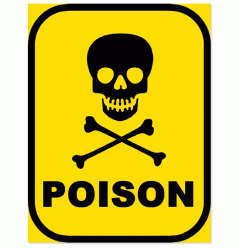 The online writing community has it’s positive and negative aspects, one negative being that tightly packed communities can pass along nasty diseases. As seemingly protected as we are behind our individual monitors, we are still subject to catching poisonous attitudes and becoming dis-abled, dis-empowered and dis-enchanted by what ails others.
The online writing community has it’s positive and negative aspects, one negative being that tightly packed communities can pass along nasty diseases. As seemingly protected as we are behind our individual monitors, we are still subject to catching poisonous attitudes and becoming dis-abled, dis-empowered and dis-enchanted by what ails others.
For the past eight weeks, I’ve been having a ball writing “The Dragon Tree.” Sure it’s tricky and I am an old dog that’s a little blurred with painkillers; but it’s been a voyage of discovery and I’ve only thrown hissy fits at typos I have missed for the fifteenth time! However, every time I read up on something I need to know, for example, first drafts, most of what I find is a mind-bending, howling chorus of negativity against putting pen to paper, or keyboard to pixel. First drafts are supposed to be the scourge of the writer, the substance of hell itself! I had fun. Is something wrong with me?
Writing is fulfilling. That is why we do it. We profess our love, yet, we sink into the negative aspects of the craft too easily.
Ask yourself this:
are we putting ourselves and other writers off the craft of writing,
by generating excessive clouds of negativity?
How many great books won’t be finished or published, as someone/s have shrunk back under the perceived external pressures of too hard? Why? Because the Internet has become overloaded with bad news about how terrible the life of the writer is. We are sneezing the plague over each other.
There is a difference between, “does anyone know how to handle this? and “I can’t cope, it’s awful…” I know it’s tough being an author, my sales stink too. There are some aspects to life which are a love/hate relationship. I know I fall into the same traps you all do and I’d love to write posts that would make it all better; but at this point I am standing back and asking, has needing constant support and broadcasting our creative issues become a way of life that is pulling us all down? Is my negativity feeding yours, then do you pass it on?
Are we in a needless negativity trap out of habit?
 So I made a creative decision for the sake of my sanity. I stayed offline. In other words, I put on my gas mask and got fresh air into my lungs. There is a lot to be said for writing alone. I have 69,000+ words and my work is growing in a healthy environment of, “yes, I can!” It may be awhile before I decide to come back online properly.
So I made a creative decision for the sake of my sanity. I stayed offline. In other words, I put on my gas mask and got fresh air into my lungs. There is a lot to be said for writing alone. I have 69,000+ words and my work is growing in a healthy environment of, “yes, I can!” It may be awhile before I decide to come back online properly.
I am not alone in being sick of all this. The Indie Writers Monthly blog has started an interesting series on lies writers tell each other. It’s intriguing, a little complex, but worth reading and evaluating if you are falling into some of these traps of thought such as, “your first book will be unsellable.” Why do we tell each other things like that? Do we believe them ourselves as we’ve read the same thing in so many places, erroneously? The repetition of the negative needs to stop.
We can do better than this!

This article / blog post is Copyright Cate Russell-Cole 2014. All rights are reserved Internationally. You may not reproduce it in any form, in part of whole, without Cate’s prior written permission. That includes usage in forms such as print, audio and digital imaging including pdf, jpg, png etc. A fee may be requested for re-using her work if it is for a commercial venture.
Link sharing and Pinterest pins are most welcome as long as Cate is the attributed Author.
Filed under: Writing Resources Tagged: attitude, author, blog, blogging, conflict, failure, Indie publishing, negativity, novel, poison, stress management, struggle, writer, writing







May 29, 2014
Reaching Out to Other Writers Improves Your Health and Decreases Stress
 If the demands of home, work, writing, social media, marketing and all the ‘shoulds’ that writers are bombarded with are getting to you… then this video will make you feel a whole heap better!
If the demands of home, work, writing, social media, marketing and all the ‘shoulds’ that writers are bombarded with are getting to you… then this video will make you feel a whole heap better!
Psychologist Kelly McGonigal, urges us to see stress as a positive, and introduces us to an unsung mechanism for stress reduction: reaching out to others. Stress may only be bad for you if you believe that to be the case.
So take the time to reach out to other writers in the online community. You helping them, will also increase your coping ability and quality of life.
Filed under: "Dose of Inspiration" Video, Author First Aid Tagged: author, beliefs, communication, community, coping, encouragement, health, help, inspiration, sickness, stress, writer, writing












